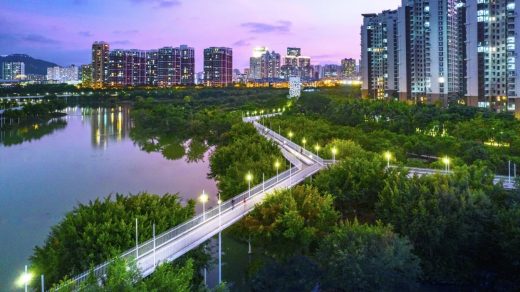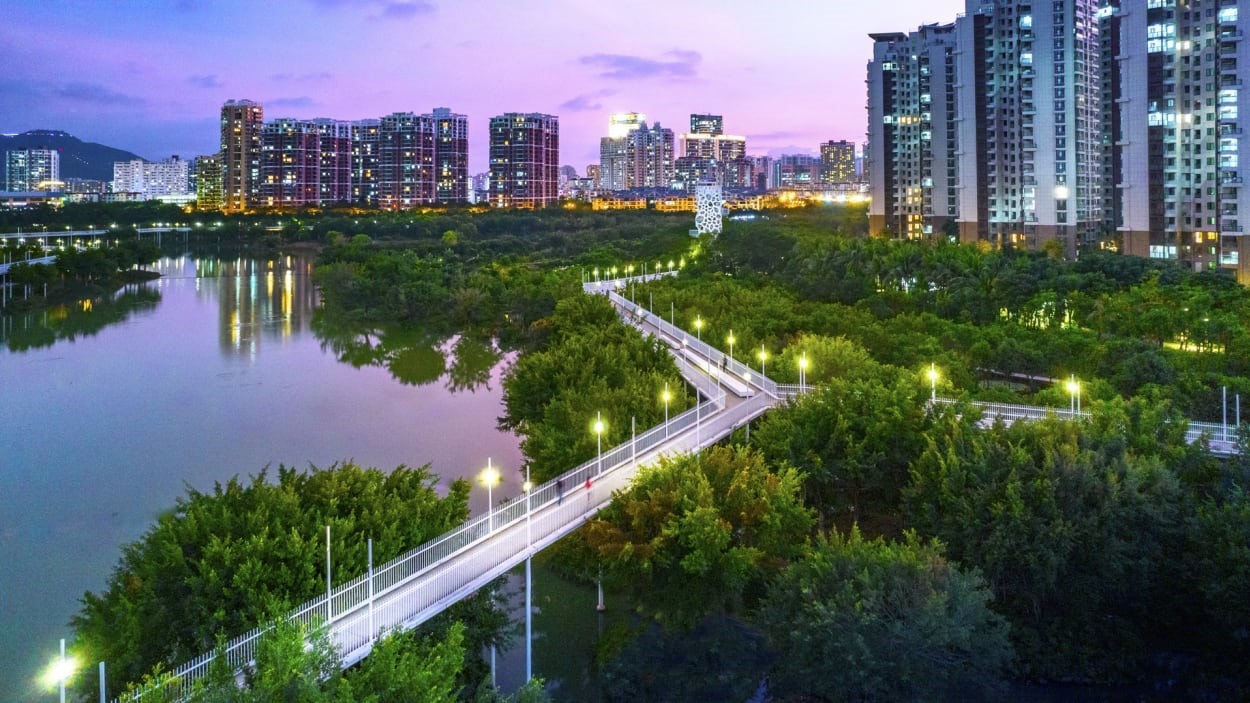Meet the landscape architect turning cities into sponges
In a corner of the fast-growing northeastern Chinese city of Harbin, a vast landscape of blue and green is conspicuous among the housing blocks and high rises of a metropolis that’s home to 10 million people. The site, an 80 acre park, is a rare bit of nature in a dense urban setting that nearly choked this pocket of natural wetland out of existence. But a design intervention by one of the most innovative landscape architects of the 21st century brought the site back from the brink. By filtering storm water into the park from the urbanity that surrounds it, and using natural plantings, habitats, and water-retaining ponds, the park has become a living landscape able to absorb the city’s rainfall. Elevated platforms and walking paths offer visitors views of this recreated wetland that is, perhaps without them realizing it, helping protect the city from disastrous floods.
The park was designed by the Chinese landscape architecture firm Turenscape and its founder, Kongjian Yu, who has worked for decades to integrate this kind of water absorbent public space into cities across China. Calling them “sponge cities,” these designs integrate nature-inspired flood and stormwater management systems into city parks and urban developments in a way that’s both seamless and effective. With hundreds of projects across China, Yu’s large-scale works have turned cities into climate-adapted sponges, and his ideas have influenced urban policy all the way up to the national level in China.
For this work and influence, Yu has just been awarded the top honor in the field of landscape architecture. He is the second laureate of the Cornelia Hahn Oberlander International Landscape Architecture Prize, a $100,000 award issued every two years by the Cultural Landscape Foundation (TCLF), a non-profit focused on landscape heritage and education. Created as a landscape-focused counterpart to the Pritzker Architecture Prize, the Oberlander Prize seeks to honor living landscape architects who’ve had outsized influence on the field through their talent, creativity, courage, and vision. In Yu, the prize’s jury has chosen a designer who has shown that landscape architecture can be a central part of the way cities are redesigned to combat climate change.
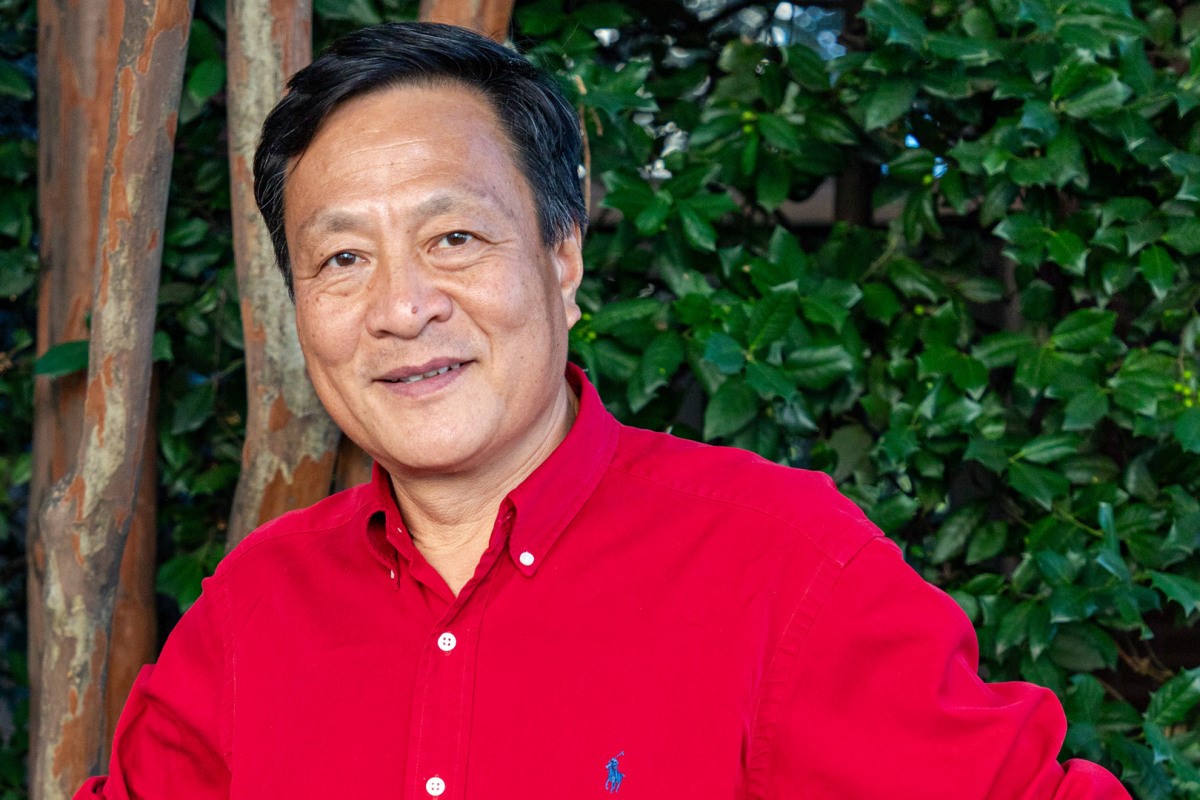
Yu is a giant in the field, and his selection as this year’s laureate cements his status as one of the most influential landscape architects since the profession was created by Frederick Law Olmsted in the 1800s. Yu is often referred to as the Olmsted of China, where his 400-person firm Turenscape has somewhat surprisingly managed to build hundreds of environmentally sensitive public spaces and parks that have provided the soft infrastructural and ecological services of recreated wetlands in the face of the breakneck urbanization of China over the past three decades.
Yu is the founder of graduate school of landscape architecture at Peking University, as well as a prolific author of books, academic articles, and landscape treatises that are accessible to a general reader. He has the ear of President Xi Jinping, who has publicly supported the sponge city concept since 2003, and many of the city-level officials and mayors who are empowered to hire his firm and implement his ideas. This fall he was named one of the winners of the 2023 National Design Awards, on top of dozens of design recognitions he and his firm have received over the years. Through a career that’s balanced formal design excellence with climate advocacy and the realities of getting things done in a top-down political system, Yu has proven to be a singular and effective force.
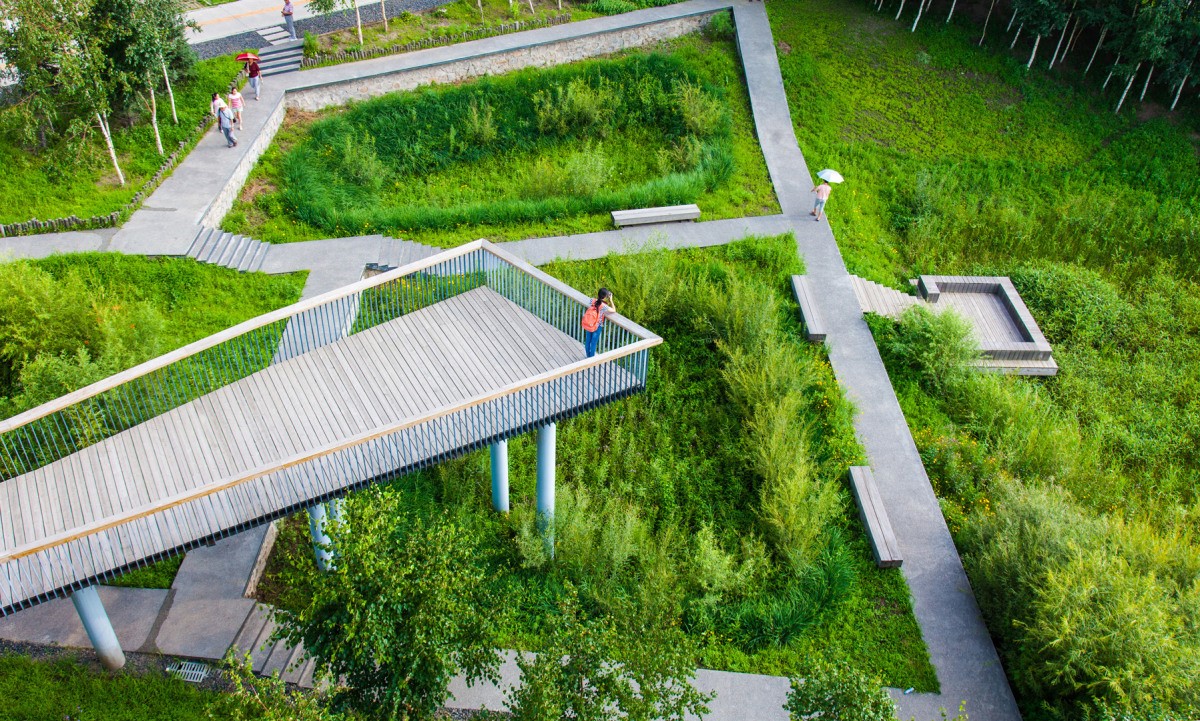
“I think his influence is perhaps greater than any living landscape architect,” says Elizabeth Mossop, dean of the University of Technology Sydney’s School of Design, Architecture and Building, and chair of the 2023 Oberlander Prize jury.
Speaking last week over video from his office in Beijing, Yu says this project and others like it simply apply the lessons of natural systems to urban environments that have too often replaced ecological resilience with hard infrastructure. This concrete-centric gray infrastructure, he argues, has only exacerbated the flooding and extreme weather impacts of climate change, and is arguably one of climate change’s root causes. Using the sponge city approach, Yu aims to inject natural water management systems back into cities to counter everything from groundwater depletion to flash flooding to sea level rise.
“My hypothesis is that if we as a globe soak up this excess amount of water, filling the aquifer with a porous landscape, we can solve the problem of sea level rise,” he says. “It’s not so difficult, it’s not so expensive, and it can be fast.”
His work is already taking hold across China, with more than 600 built projects and newly adopted national policies that have seen sponge city projects built in dozens of major Chinese cities. If he can, he’s hoping to spread this movement beyond China to the rest of the world.
Yu’s appreciation and understanding of natural systems comes largely from his youth. Born in 1963, Yu spent the first 17 years of his life in a small agrarian village in Zhejiang Province, south of Shanghai, never venturing more than about 10 miles away. “The village is a universe,” he says. “To me, it’s a cosmos.” His village sat along a creek that had been carefully managed through a series of subtle dams called weirs, tended for more than 2,000 years, that slow the water’s flow enough for fishermen and farming irrigation, but which also capture the extreme downpours and prevent floods during seasonal monsoons. Life in the village, and many others like it, was built around this cycle of extreme downpours and the reliance on what water could be held onto for irrigation during the dry months.
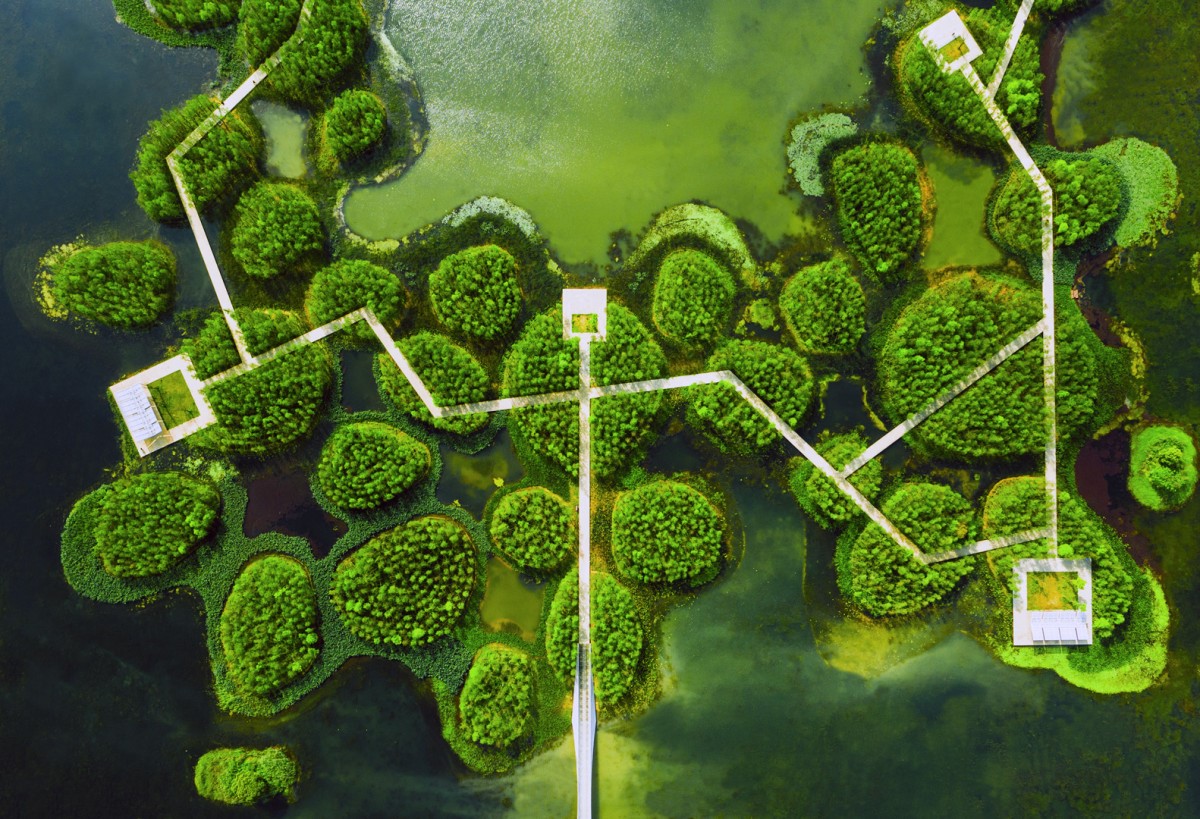
“Climate change, to me, is nothing new. It was nothing new to all those people living in that area in China, in India, in Malaysia,” he says. “Most agricultural societies all depend on following and adapting to the monsoon climate.”
Yu left the village in 1980 when he was one of only a few students nationally to be selected to study landscape gardening at Beijing Forestry University, which was then mostly focused on the design of formal grounds and the vernacular Chinese gardens of the 17th century. He eventually earned a master’s degree.
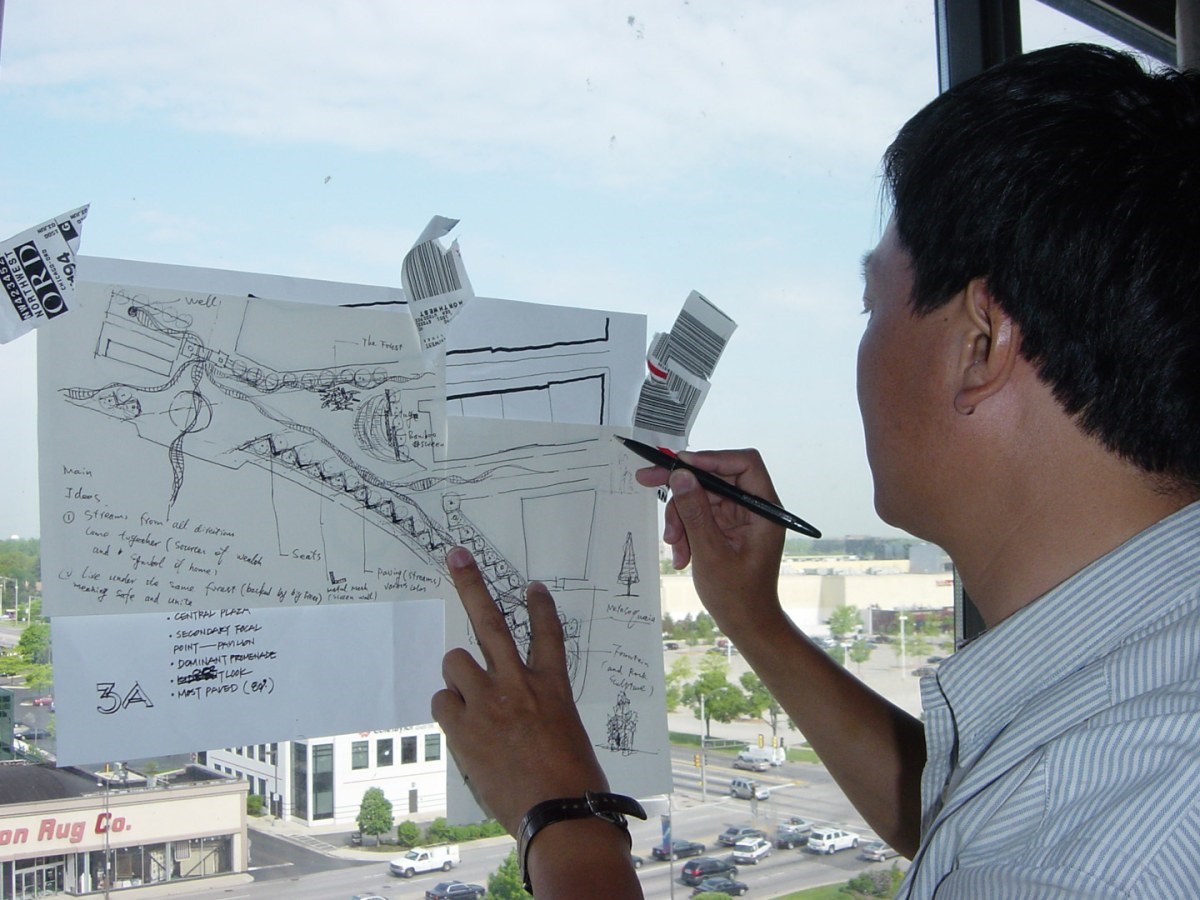
But this was also a time of major change in China, with the state-centric Mao era leading into the more open economic reforms of the late 1970s and ’80s. Capital flowed and development boomed, refashioning China’s largely agrarian society into modern towns and cities. After about a decade away, Yu returned to his village for the first time and found that along with the new wealth and material possessions that development brought, the natural cycles of life had been completely disrupted. “I saw this dramatic change. The creek itself had been channelized in concrete,” he says.
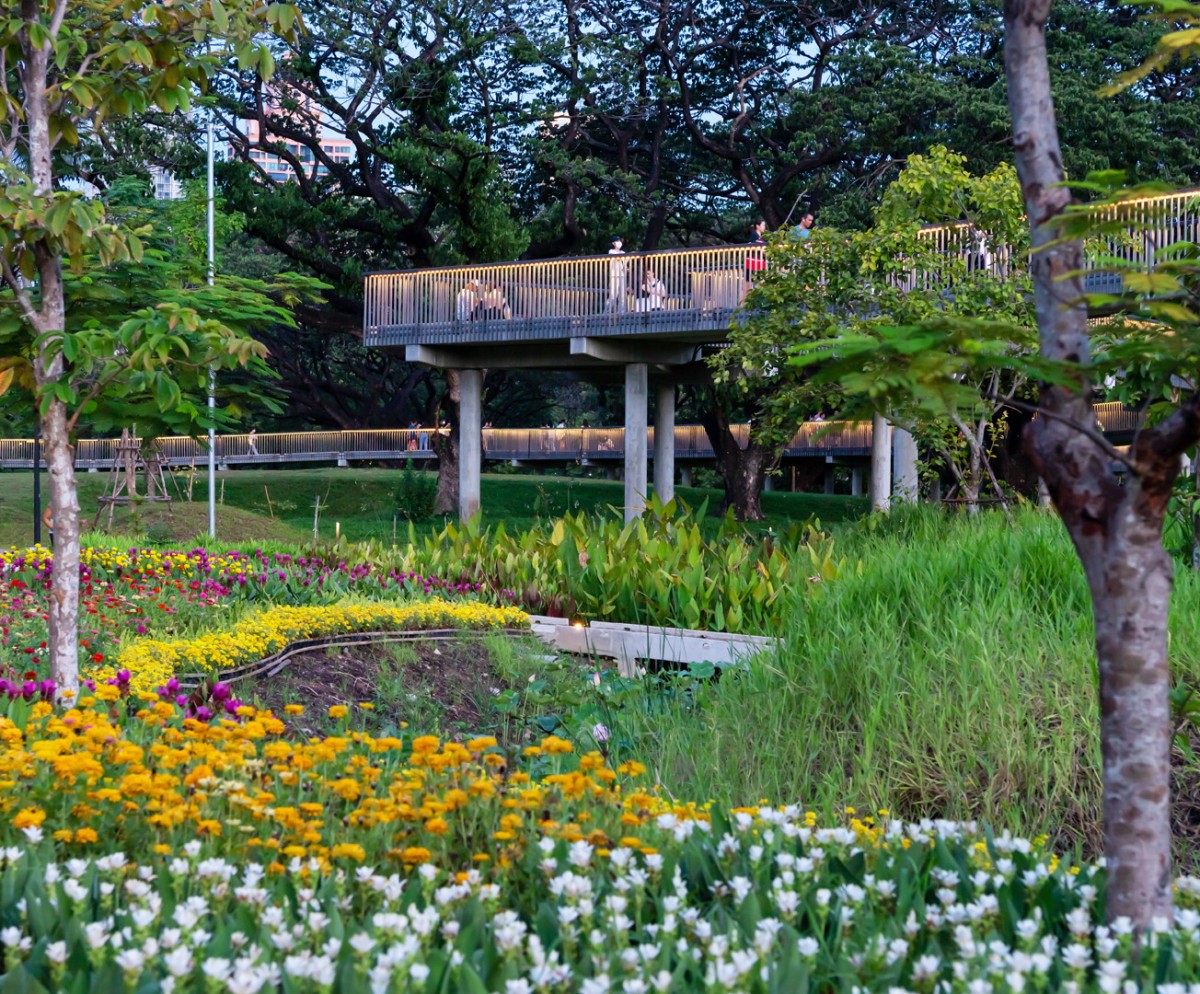
Yu recalled a boyhood experience of falling into the rushing waters of the creek. He could have easily drowned, but vegetation in the stream slowed the current and trees alongside it gave him branches to grab and pull himself to safety. Now covered in concrete, the creek was essentially a high-volume drain, effective at preventing floods from monsoons but devoid of life and no longer the carefully tended tool of farmer and fisher alike. Seeing the creek covered in concrete, Yu realized his new profession had the potential to offer an alternative.
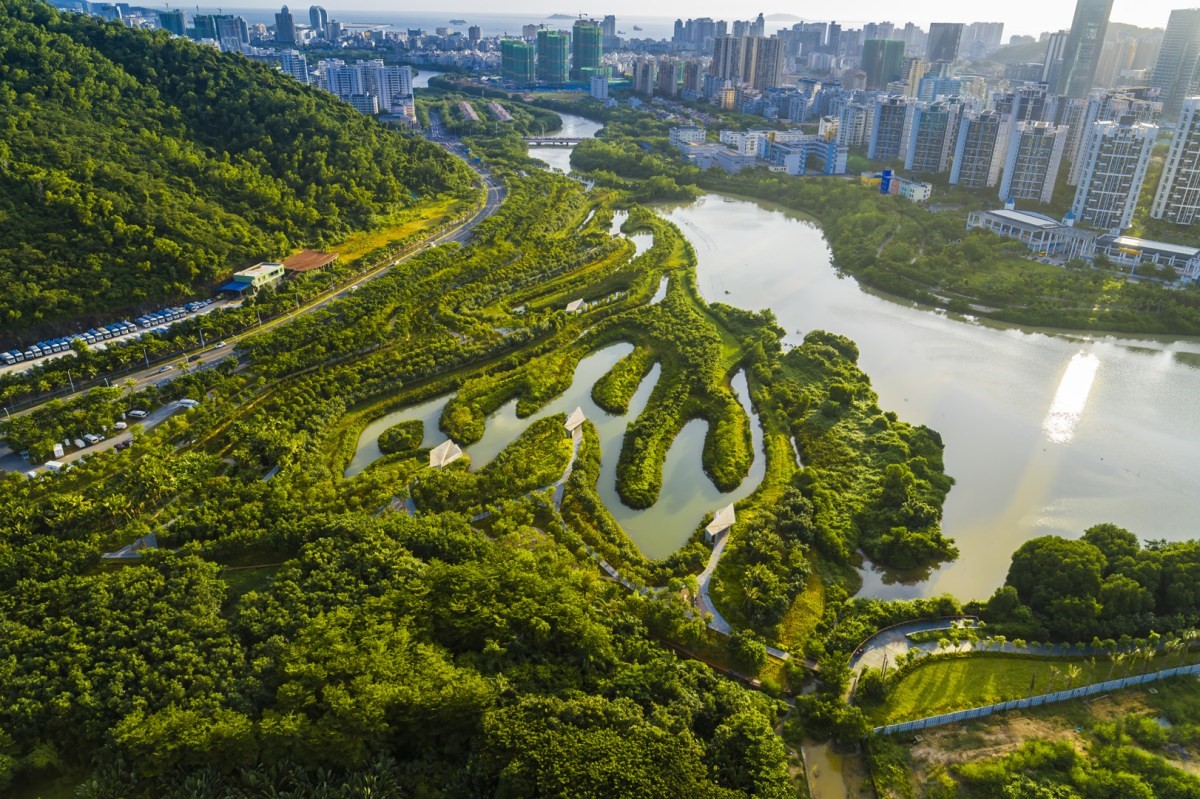
“That made me think: how can we reclaim agricultural societies’ good relationship between man and nature,” he says. “Can we integrate industrial technology so that it will minimize the impact on nature and maximize the gain?”
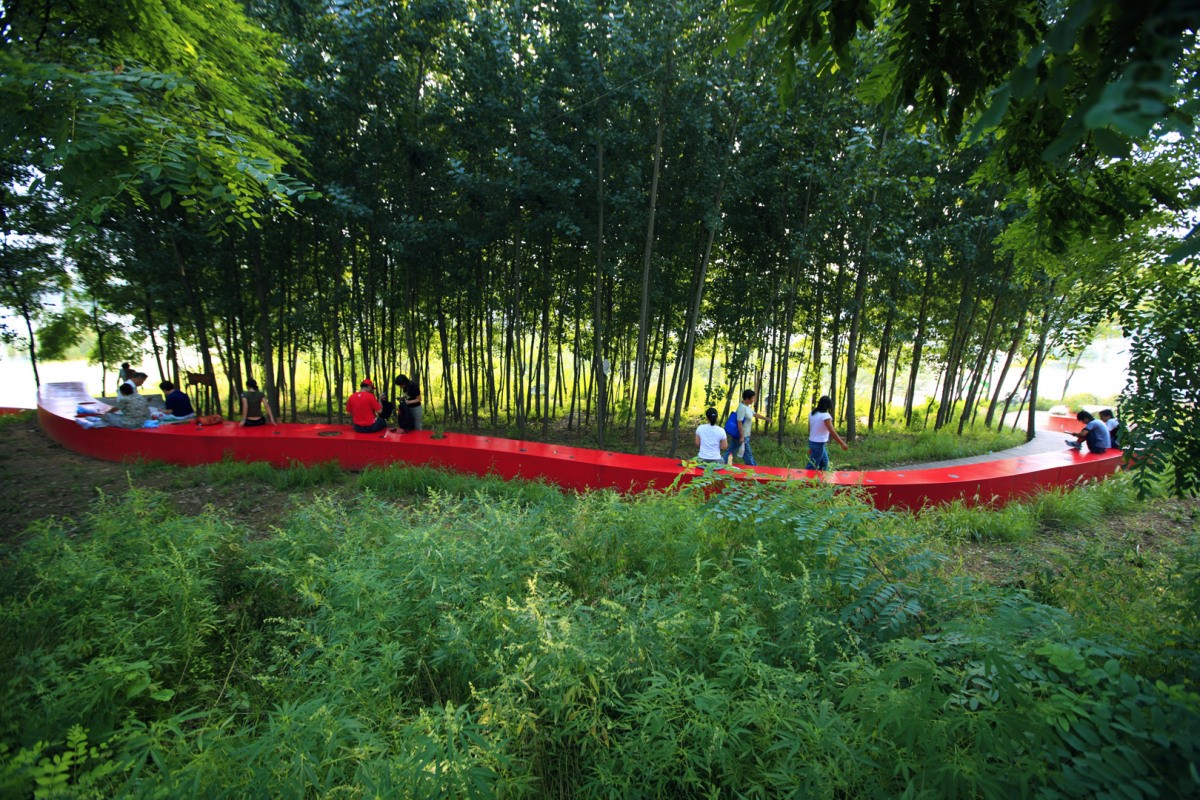
Shortly after, he moved to the U.S. to explore these ideas at Harvard, earning his doctorate in 1995. In 1998, he returned to China and founded Turenscape. By this point, China was headlong into a vast campaign of urban development, mostly modeled on Western ideas of large-scale master planning and car-oriented grids. New districts were popping up seemingly overnight. Yu once again watched his homeland paved over with concrete and the kind of gray infrastructure that transformed his village.
Through Turenscape, he began to suggest a different approach. Not standing in the way of the steamroller of development, Yu instead began designing proposals for parks and public spaces within these new developments that could effectively replicate the ecosystem services and flood protection conventional construction was paving away. “They are ecological infrastructures which can maximize natural surfaces, and meanwhile you still have space for development,” he says. Using the landscape to provide habitat and recreation while cleaning urban runoff and preventing floods, his proposals were a significant departure from the status quo.
Government officials began to take notice. In the late 1990s he was invited to give a lecture to a mayor’s forum, where hundreds of government officials would cram into a state banquet hall to listen to various speakers and central government propaganda. Yu detailed his vision for this more ecological approach to urban design and development, ditching the gray infrastructure of concrete for what he calls blue and green infrastructure of natural water systems and ecosystems. “Luckily enough, one mayor agreed with me,” he says. “So I built a couple projects there.”
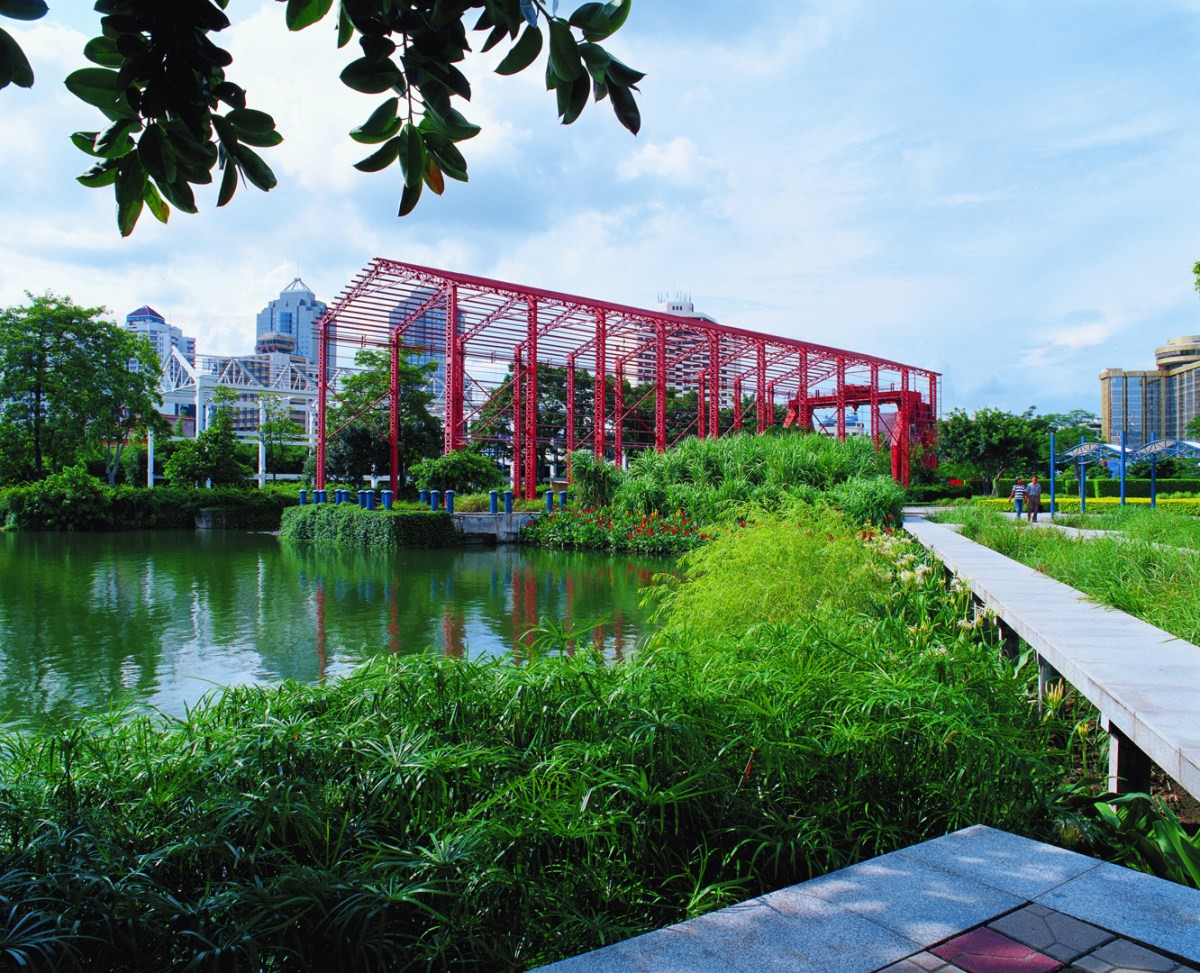
The city of Zhongshan, in China’s soggy Pearl River Delta, became home to Turenscape’s first major built project, Zhongshan Shipyard Park. A 27-acre landscape built on the site of (and with many structures from) an abandoned riverside shipyard in the center of the city, the new park preserved elements of its industrial past while injecting garden-like spaces and plantings that help clean the site’s water. Remnant railroad tracks still emerge from the ground, and the steel trussed canopies over loading docks have become new focal points. Yu used the project to show that a living landscape could accommodate social purposes while also dealing with the highly fluctuating river levels that would have otherwise caused an unmanaged area to flood.
The project was a sensation, luring crowds, spurring development on its fringes, and winning Turenscape a prestigious Design Honor Award from the American Society of Landscape Architects. Other mayors in China began calling his office.
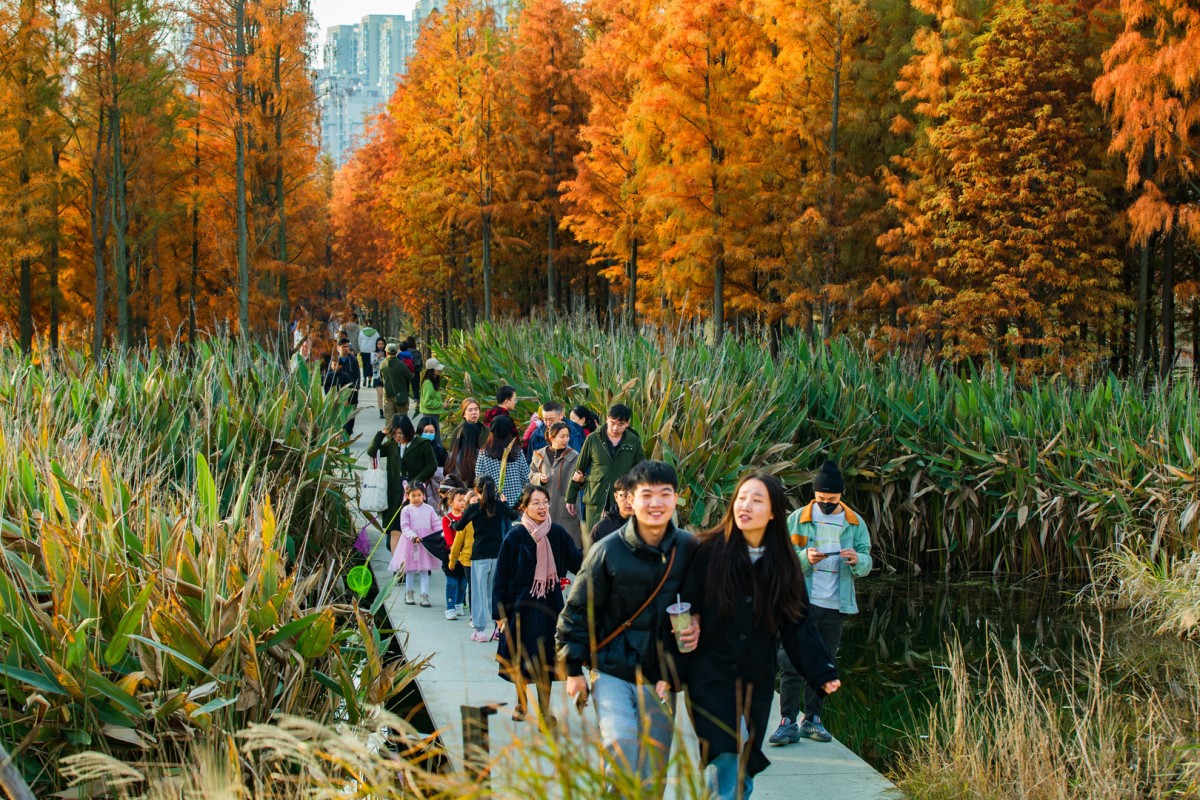
“He became very influential and a lot more people in China started engaging in this kind of work. But initially it was such a departure,” says Mossop, who first encountered Yu’s work in the early 2000s when she was on a jury advising the preparations for the 2008 Summer Olympics in Beijing and potential landscape designs for its main venues and Olympic village. “You looked at all of these proposals and they all looked like versions of the same thing,” she says. “Kongjian Yu’s proposal was completely different.” (He did not win that project, to Mossop’s chagrin.)
But his unconventional approach has carried through in other work. Mossop points to a standout project from 2008 in the northeastern city of Tianjin, where Turenscape turned a former shooting range and dumping ground into an ecosystem-rich constructed wetland covering 54 acres, where dozens of ponds of water rehabilitate the soil and the city’s collected storm water while providing walking paths in an increasingly crowded city. “It’s just the most magical landscape,” Mossop says. “It’s the repetitive form of these ponds, but they’re all slightly different from one another, and they show what is happening with the management of water.”
Turenscape’s designs, now built or in development across 200 cities in China, repeatedly strike this balance of environmental remediation, aesthetic excellence and cultural attraction. It’s also key, in Yu’s mind, to combatting the biggest impacts of climate change in cities.
“All of this work has been really in service of his big ideas about the potential of landscape architecture and the kind of landscape architectural thinking that he feels is absolutely essential in trying to address the big existential issues that we face around climate adaptation, around the relationship between cities and nature,” Mossop says.
Calling Yu the Frederick Law Olmsted of China is no exaggeration, according to Charles A. Birnbaum, president and CEO of TCLF, which created the Oberlander Prize. Olmsted, who’s known for designing New York’s Central Park, as well as hundreds of major public parks across the U.S. through his successor firms throughout the 19th and 20th centuries, defining how the U.S. created public space. Yu is doing something similar today in China.
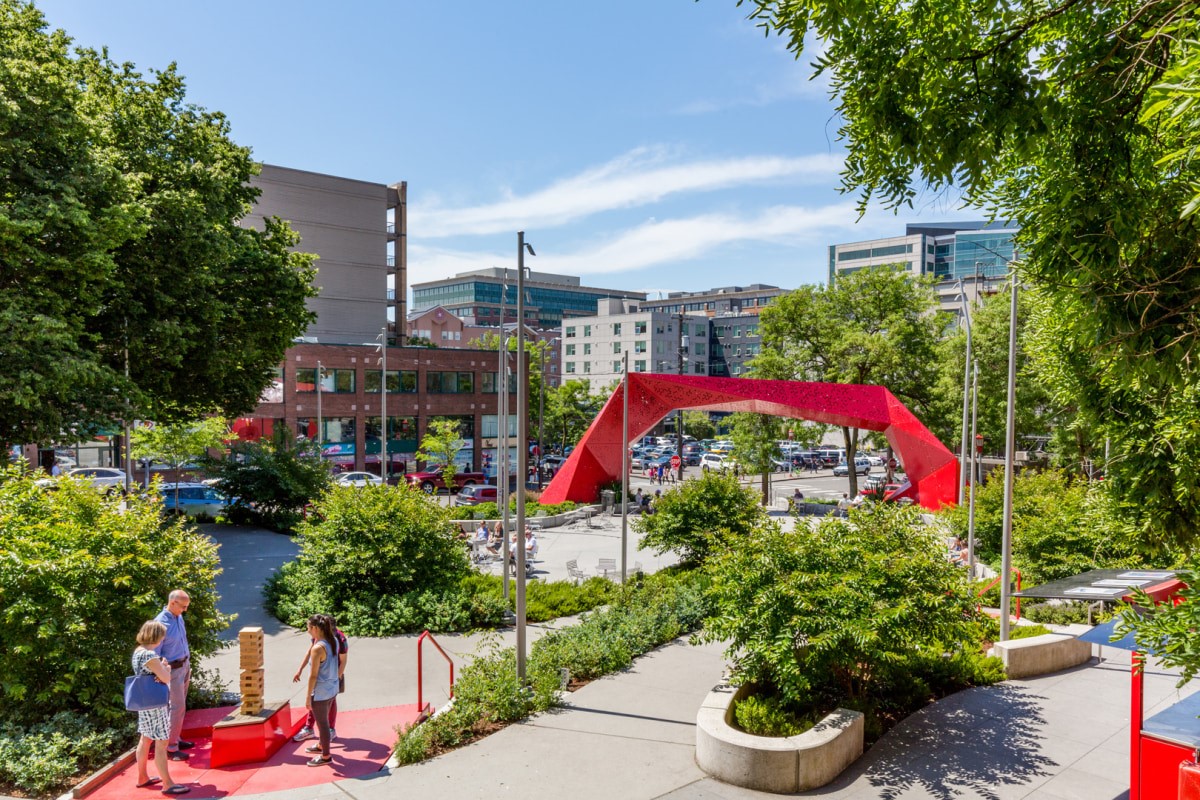
“It’s important to recognize that like Olmsted, Kongjian Yu has affected national policy at a monumental scale,” Birnbaum says.
In 2013 China made the sponge city concept a national policy for urban development in flood-prone areas. More than 70 cities across the country have implemented sponge city projects since then, and the national government has set a goal that by 2030 80% of China’s cities would be able to absorb at least 70% of their rainfall. The central government in China has made implementing some of Yu’s ideas more feasible, and he’s grown adept at understanding how to make his case to the decision makers in the top-down system. “You have to make use of it, otherwise you cannot do anything,” he says.
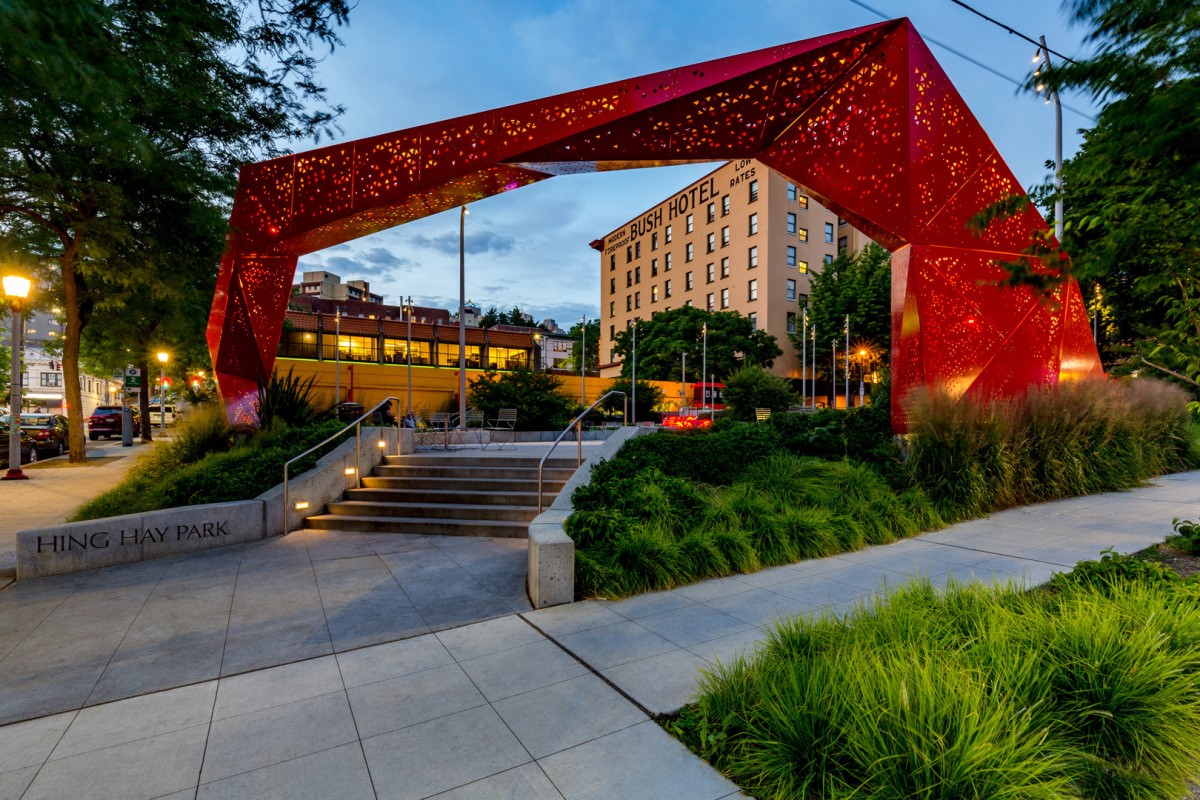
TCLF has found evidence of more than a dozen other countries around the world either building or planning projects based directly on Yu’s sponge city idea, including Bangladesh, Egypt, Kenya and Singapore. One sponge city project by Turenscape has been built in central Bangkok, Thailand, turning an industrial brownfield into a series of four large lakes dotted with small islands and wetlands that provide habitat while safeguarding the floor-prone city from extreme rains. The lakes, which are surrounded by a densely planted forest, are capable of holding more than 35 million cubic feet of storm water in a heavily populated urban setting. “What we see with Kongjian Yu unequivocally is that the landscape architect is the natural leader for combatting the climate crisis,” Birnbaum says.
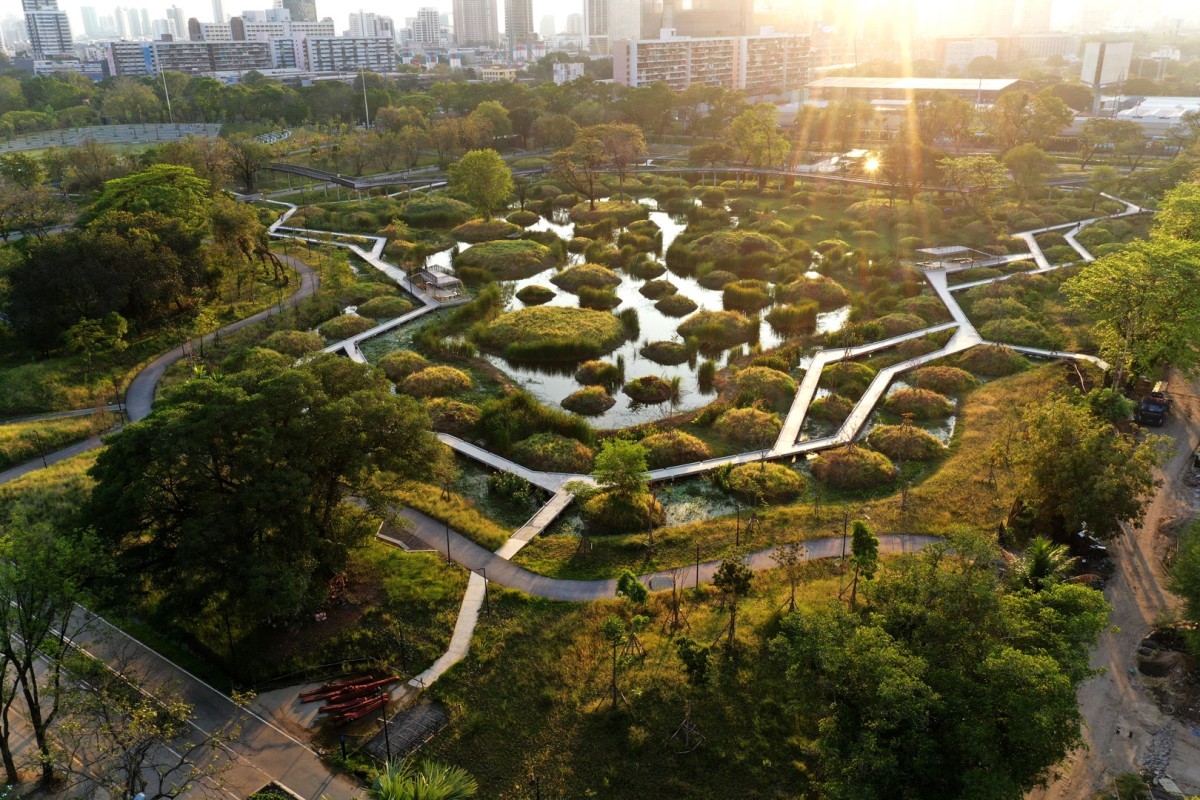
Yu still sees much work to be done. Sponge cities that can absorb and rainwater and manage flooding through natural systems are still in the minority. “People are still doing business as usual, still paving, still channelizing, still building dams,” he says. “It is a long march. It’s not so easy.”
In the face of climate change, the conventional approach will only exacerbate the flooding and extreme weather impacts the sponge city concept was designed to offset. “If places keep doing this urban gray infrastructure, they will fail,” Yu says. “My ambition, my vision is that this model can transform the whole globe. I’m confident that there’s no better way.”
(19)

